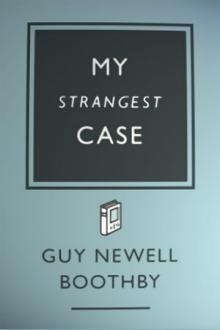The Main Inquiry by Brian Deis (best novel books to read TXT) 📖

- Author: Brian Deis
Book online «The Main Inquiry by Brian Deis (best novel books to read TXT) 📖». Author Brian Deis
The catapult on the left side of the flight deck was ready. The second F-4 was rolled into position and hooked up to the nose gear hardware. As before, the checks were run inside and outside the plane. I got the notification that everything was ready for flight. I keyed the radio and said, ”Spinster – Overloard, you are clear to launch. Good luck”. The response came back promptly, “Overloard – Spinster, roger launch.”
Spinster was Len Toner and he was an experienced pilot that was in the wing when I arrived. He was a fine pilot with lightning reflexes that made him an asset to the wing. Today, he was flying wing man for Joker, he finished his checks and gave the salute to the catapult operator. The big rig fired the fighter down the deck and into the air in a split second. The ride the catapult gave us was like a wake-up-call and my heart would race for minutes after the shock to my system. The plane began the turn to the right and suddenly the airframe shuddered and the right-side motor went dark. The plane faltered in the air and slowed, while beginning to loose altitude. This is a life-and-death emergency that was upon the pilot in an instant. The motor had stopped in the time it took to ride the catapult. The plane was barley at flight speed and needed full power to increase speed and climb to safety. With one motor, and a full load of fuel and weapons, that was unlikely on a fairly calm day.
Time seemed to slow for Spinster as his mind went to full speed. The plane was hard to fly, and the altimeter was telling a deadly story for the experienced pilot to figure out. He evaluated the situation and decided that the plane could not climb clear of the water before impact. He could feel the plane slowing and knew there was no time to debate the options for saving their lives. His blood ran cold as he made the decision to egress the plane. At that instant, ejecting from the plane had a fifty-fifty chance of their survival. As the ejection seats were shot from the plane, there was a considerable chance that the they would hit the ship that was closing in on the plane. That plane had not been upgraded, and so there was also a chance that the parachute would not open in time to save them from hitting the water. Staying in the plane would mean they would have been strapped in as it hit the water with the largest ship in the navy right behind them. LT Toner was well aware of all of the problems he faced. His training and quick mind combined to allow him to think at a high rate as he pushed the emotions and doubt aside. Each option had deadly components and it came down to a judgement call that would change the lives of both men in the plane. He keyed the mike on the intercom before he had made the final decision for them and he then gave the order: “Eject -Eject-Eject” and in an instant both were shot out of the plane by a large shell under the seat. The acceleration combined with 125 mph wind over the plane made them shoot from the plane and become twisted and pulled by the forces outside the plane. The acceleration faded in several seconds and then a feeling of weightlessness while they waited to see if the chutes opened.
He had taken actions to increase the odds of survival for himself and his RIO. Spinster was trying to aim the ejection seats so that they would not hit the ship. After what seemed like minutes, the chutes opened and the realism of the situation began to soak into their minds with the cold sea water that suddenly hit them.
I lost sight of the plane as the huge ship overtook it. I watched the two dots as the ejection seats took over, and they were blasted straight up several hundred feet. Everyone onboard had eyes glued to the two men as they were powered to altitude and the parachutes opened. By the time the men were safely in the water, the ship had motored well past them, and the plane was gone. We were all shocked at how fast the plane disappeared in the dark water. While we did not see the impact with the water, the plane was in several pieces as it came into view. The impact was not something they could have survived, and so some good decisions had been made by Spinster.
The scene was chaotic as I was shutting down flight operations and the senior watch officer was slowing the ship while securing from preparations to launch the next plane. The bridge had erupted with activity around the downed men and the lost plane.
Our rescue helos were in the air in an instant and soon had our men scooped out of the water. I was in radio contact with the helos and confirmed that the two men, that normally fly with me, were alive and would be seen by the ship’s doctor to be checked out. After that was done, they would both proceed to the briefing room to begin the work that follows an incident like this one.
The ship was slowed and turned to a course to re-join the formation. Many actions were taken to secure from flying and set the regular steaming watches throughout the ship. These things were done with amazing efficiency and in a few moments one could not tell there had just been a major emergency on deck.
The senior watch officer arrived on the bridge wing with a load of questions for me:
“Maine, what the hell was that?” He asked, “it looked like he lost a godamed motor in the middle of the launch!”
“He did just that.” I responded, “We will soon get the facts, but it was a cold shot probably caused by a compressor stall or a fuel pump failure. The important thing is that our guys are OK and being checked out.”
“That is a good thing.” He said with a stressed voice and the body language of a mass murder. “I have never seen you guys put a plane in the water, it was a wonder they were not killed!”
“You got that right,” I said, “the chances of getting out of that situation is about 50-50 with failure of one motor and less than ten percent if they both quit. That is, assuming the pilot gets everything right and nothing else goes wrong while he is saving their lives.”
“I just can’t believe what I saw!” he shouted, “I am secured from flight operations and the ship and formation is safe. What the hell do we do next, under these circumstances?”
“I have to get everything secured and we have a long checklist of actions that will take about an hour to complete.” I told him.” we have data to collect before any changes are made to the equipment. It is essential to know everything we can, so that we can reconstruct the situation.”
“Well, I will steam straight until you tell me different, Maine, so keep me informed.” He ordered. I assured him that he would be the first to hear when we could resume normal operations.
I organized teams of people to confirm the position of all the equipment and the settings of every gauge and instrument in our area of the ship. There were “After Incident Reports” to be filled out by every person that was on deck or working on the launch in any capacity. All the information would be collected in less than two hours so that we could get back to our jobs.
My first concern was for the Pilot and the RIO, whom I had known for many years. The RIO, for that flight, was Lieutenant Pete Keys (call sign Demon). Pete was one of the better RIOs in the wing. He had eight years in the back seat that made him capable, and his nature was to be calm when things got difficult. The two of them were about the best combination of talent that you could put in a plane when there was an emergency. I knew that they would be able to tell us what had gone wrong with the plane. The RIO position sat behind the pilot and was in charge of navigation and all the weapons that were on the plane. The pilot was the plane commander, and was responsible for flying the plane and keeping them safe.
Meanwhile, the rest of the scheduled planes were not launched. Our requirements to support the ground troops had to be met, and so the ship returned to the routine that made it the best carrier in the fleet. In only a few hours, the next missions were run and the planes were flown as if nothing had happened.
Every pilot was uneasy about the plane loss and we all knew that it could have been any one of us that was tested to see if we could survive. We would remain concerned until we found out what caused the engine loss in Toner’s plane.
I was betting that the cause of the problem was a compressor stall in the right engine. Our big jet engines performed well in fighters. They were reliable overall and, once we got them running, they seldom gave us any problems. When they did act up, however, there was a short list of things to do about it. One of these problems was the compressor stall which happened mostly while the motor was heating up, causing it to shut off completely. Having a jet go dead was never going to be the best part of our day. The worst time for the motor to shut down was after the catapult operator had pulled the trigger and the steam ram was shooting you and your 45-million-dollar fighter off the bow of the ship.
Chapter 2
Find Out What Happened
Len Toner and Pete Keys were in the briefing room with Coswell as I arrived with my wing commander. They were drinking coffee and discussing the ill-fated mission. These old friends saw us coming and got serious looks on their faces. I shook their hands and asked if they were OK.
“Hell, Main, we are fine except for bruises in some personal places and a little case of jumpy nerves.” Spinster said.
“That was a hell of a ride,” said Spinster. “we are glad to have made it out of there. We all know that you need some luck to get out before the thing catches on fire or hits the drink..”
“It is great to see you and know you are both OK.” I confirmed, “so tell me what happened and we will all get back to work.” I ordered.
“The setup looked fine and everything was normal as we hit the catapult. He set the thing off and we zipped over the end of the flight deck in no time.” He said. “There were no alarms or anything
 However, all readers - sooner or later - find for themselves a literary genre that is fundamentally different from all others.
However, all readers - sooner or later - find for themselves a literary genre that is fundamentally different from all others. 




Comments (0)